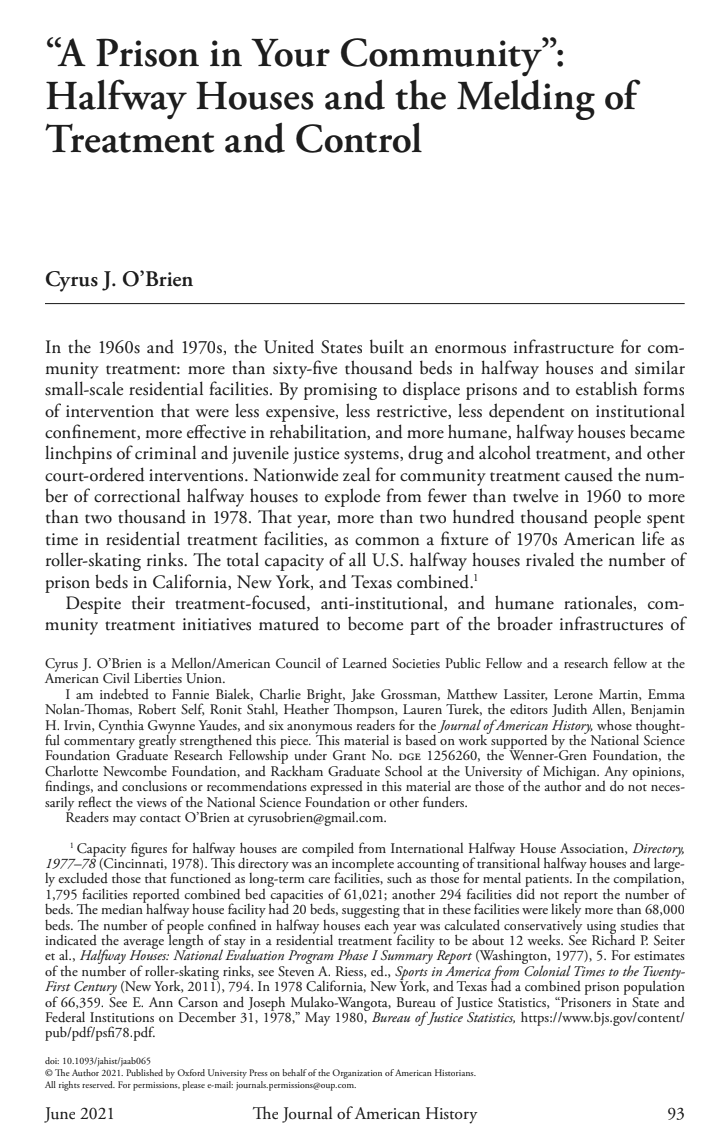Research
My academic work asked how and why the United States became the world’s largest jailer. Drawing on 13 months of ethnographic research I conducted in a Florida prison as well as archival research in Florida, Texas, and Illinois, my work used religion as a lens to examine the development of mass incarceration. My dissertation won major awards from the University of Michigan Society of Fellows and the University of South Florida, and my research was supported by the National Science Foundation, the Wenner-Gren Foundation for Anthropological Research, the Rackham Graduate School at the University of Michigan, the Anti-Discrimination Center and the Charlotte Newcombe Foundation.
The Journal of American History, the journal of record in the field, published my article, “A Prison in Your Community” in June 2021. Please contact me if you need access to a copy.
Since 2020, my research has focused on data science and survey methods. I conduct quantative analyses of complex datasets, including the National Crime Victimization Survey, the Survey of Consumer Finances, the Survey of Household Decisionmaking, and other sources of criminal justice and economic data. Publications drawn from my quantitive research are forthcoming, and this page will soon be updated.
